Inflight Magazine of Brussels Airlines
Welcome to the Inflight Magazine of Brussels Airlines
Racing ahead
Valencia has been put on the world’s sporting map by the America’s Cup, and is set to be welcomed to the glamorous world of Formula 1. With prices still below the Spanish average, growth still positive and strong local demand, it is also a growing property hotspot, reports Shane McGinley
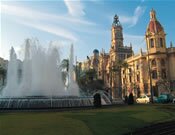 Located in south-eastern Spain, the area known as Valencia is made up of three main provinces: Alicante, Valencia and Castellón. With 518km of coastline along the Mediterranean and almost five million inhabitants, it is one of Spain’s major, if lesser-known, provinces.
Located in south-eastern Spain, the area known as Valencia is made up of three main provinces: Alicante, Valencia and Castellón. With 518km of coastline along the Mediterranean and almost five million inhabitants, it is one of Spain’s major, if lesser-known, provinces.
The area’s history dates back to the heady days of the Kingdom of Valencia in the 13th century, and although these days it’s been amalgamated into the rest of Spain, the region retains its independent spirit. It was awarded partial autonomy and eventual self-government in 1982, and, as a result, has its own language and is recognised as a separate national identity.
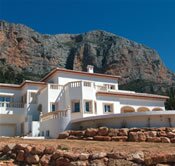 Despite the fact that its capital, Valencia, is the third largest city in Spain and its port is one of the busiest in the Mediterranean, it is not yet one of Spain’s more expensive locations. However, all that may be about to change. The area attracts over four million visitors each year and, according to Martin Dell, managing director with property agents Kyero, of the 31,342 Spanish properties bought during the first quarter of 2006, Valencia was the most popular destination, with 8,870 being sold, accounting for 24% of all sales to foreigners.
Despite the fact that its capital, Valencia, is the third largest city in Spain and its port is one of the busiest in the Mediterranean, it is not yet one of Spain’s more expensive locations. However, all that may be about to change. The area attracts over four million visitors each year and, according to Martin Dell, managing director with property agents Kyero, of the 31,342 Spanish properties bought during the first quarter of 2006, Valencia was the most popular destination, with 8,870 being sold, accounting for 24% of all sales to foreigners.
On the right track
 It helps that the average price of property is €222,000, 11% below the national average. Last year prices per square metre showed that Barcelona, San Sebastian and Madrid were the most expensive, averaging €4,603, €4,408 and €3,800 respectively. Valencia ranked eighth, averaging €2,561 per square metre. The province saw prices increase by 6.6% from 2005 to 2006, and in Valencia City by over 15% in 2006.
It helps that the average price of property is €222,000, 11% below the national average. Last year prices per square metre showed that Barcelona, San Sebastian and Madrid were the most expensive, averaging €4,603, €4,408 and €3,800 respectively. Valencia ranked eighth, averaging €2,561 per square metre. The province saw prices increase by 6.6% from 2005 to 2006, and in Valencia City by over 15% in 2006.
Valencia has been making strides to increase its profile on the world stage. This year it played host to the America’s Cup tournament, which has a TV audience of 300 million and attracted 150,000 spectators every day. In preparation for the event, €1bn was spent on infrastructural improvements, including a new high-speed rail link from Madrid, redevelopment of the Inner Harbour and the extension of the metro system and main airport.
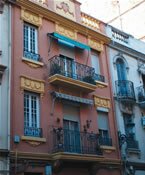 Furthermore, in May, Formula 1 boss Bernie Ecclestone announced that Valencia would be the host of an urban circuit, beginning in 2008. The McLaren Mercedes 2007 season car was launched in Valencia and there are clear plans to transform the city into a world centre for the lucrative motor sport.
Furthermore, in May, Formula 1 boss Bernie Ecclestone announced that Valencia would be the host of an urban circuit, beginning in 2008. The McLaren Mercedes 2007 season car was launched in Valencia and there are clear plans to transform the city into a world centre for the lucrative motor sport.
“The area has been preparing for high-class sports performers, and Formula 1 will be the next chapter in Valencia’s development. It will bring the name of the city all over the world and it will bring the price of everything up, including property,” believes Daniel R Talavera, editorial and marketing manager at Property Secrets Spain.
Pole position
 Valencia is one of the most prosperous areas in Spain, with unemployment lower than the national average. Despite concerns about the property market currently being aired in the Spanish press, it’s one of the country’s safest investment options, with stronger rental return and less chance of a property bubble than elsewhere.
Valencia is one of the most prosperous areas in Spain, with unemployment lower than the national average. Despite concerns about the property market currently being aired in the Spanish press, it’s one of the country’s safest investment options, with stronger rental return and less chance of a property bubble than elsewhere.
“As a city, Valencia is driven by the local economy, so overseas buyers are not an important part of the market,” reports Mark Stucklin from Spanish Property Insight. While British and Irish buyers are the biggest foreign investors, this strong local market means that prices will be less susceptible to foreign confidence in the market and holiday-makers.
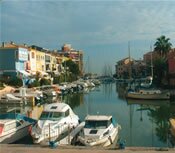 “It is a very dynamic and energetic city, especially on the town planning side of things, and is very undiscovered,” says Stucklin. However, in recent years the area did receive some negative attention due to what was termed the ‘Valencia land grab’. This was the Ley Reguladora de la Actividad Urbanistica (LRAU), a law stating that if a developer has put forward plans for a development using other people’s land that they do not currently own, and if the plans are then approved by the authorities, the land that is currently not owned must be sold to the developers.
“It is a very dynamic and energetic city, especially on the town planning side of things, and is very undiscovered,” says Stucklin. However, in recent years the area did receive some negative attention due to what was termed the ‘Valencia land grab’. This was the Ley Reguladora de la Actividad Urbanistica (LRAU), a law stating that if a developer has put forward plans for a development using other people’s land that they do not currently own, and if the plans are then approved by the authorities, the land that is currently not owned must be sold to the developers.
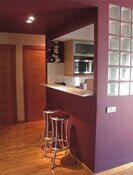 Compulsory purchase orders such as the LRAU are common across Europe, and although the LUV (Ley Urbanistica Valenciana) amended the law last year, it is a consideration people should take into account. For example, Stucklin points to plans to extend the major avenue from Valencia City down to the beach, which, while being great for the City, means potential buyers should check with the planning authorities that any property they plan to buy is not within the route of the extension.
Compulsory purchase orders such as the LRAU are common across Europe, and although the LUV (Ley Urbanistica Valenciana) amended the law last year, it is a consideration people should take into account. For example, Stucklin points to plans to extend the major avenue from Valencia City down to the beach, which, while being great for the City, means potential buyers should check with the planning authorities that any property they plan to buy is not within the route of the extension.
As a general rule, before you consider buying in Valencia it is advisable to check the plans for the area where the property is located to make sure it is not situated on land that is part of a larger development or project.
Rich pickings
In terms of where to buy, Dell reports that their data shows there is a difference in prices in the regions. He reports that in towns such as Bocairent, located inland, prices are 30% below the provincial average. Casinos, north-west of Valencia City, is 40% below and Oliva, on the southern coast, is 10% below.
The more expensive areas are Chiva, on the main highway west of Valencia City, where prices are on average 18% higher; Monserrat, located south west of Valencia City, is also 18% higher; and Valencia City is about 16% above the province average. Dell also observes that the most sought after properties are three-bedroom villas, which average at €206,000. Talavera believes a future hotspot will be towards the north of Valencia City in Congresos, where developments are planned and where the football stadium is being moved to.
With a maturing Spanish market, Valencia is an area on the rise, where property prices are still below the national average but where development is fast progressing. Don’t get left behind.
Contacts
Property Secrets Spain
www.propertysecrets.net
www.propertysecrets.es
Kyero
www.kyero.com
Spanish Property Insight
www.spanishpropertyinsight.com
Holiday Rentals
www.holiday-rentals.co.uk
FR Valencia, la course à la propriété
Située dans le Sud-est de l’Espagne, Valencia se compose de trois grandes provinces: Alicante, Valencia et Castellón. La région a sa propre langue et une identité nationale distincte. Malgré que Valencia, sa capitale, soit la troisième plus grande ville d’Espagne, elle n’est pas pour autant la plus chère. Mais cette situation pourrait être en train de changer.
Selon Martin Dell, de Kyero property agents, Valencia s’est imposée comme la destination la plus populaire avec 8 870 propriétés vendues sur un total de 31 342 dans toute l’Espagne durant les quatre premiers mois de 2006. Bien sûr, le fait que le prix moyen des biens immobiliers tourne autour de €, soit 11% en dessous de la moyenne nationale, aide.
Valencia a accéléré la cadence pour se profiler au-devant de la scène internationale. Cette année, la ville a accueilli la course de l’America’s Cup. En vue de l’événement, des investissements à hauteur d’un milliard d’euros ont été injectés dans l’aménagement des infrastructures, dont notamment une nouvelle ligne de train à grande vitesse depuis Madrid. Le marché immobilier est l’une des options d’investissements les plus sûres du pays. Toutefois ces dernières années, la région a reçu des échos négatifs suite au “Valencia land grab” (réquisition des terres), dans le cadre de la Ley Reguladora de la Actividad Urbanistica (LRAU). Des ordres de rachats obligatoires comme ceux émanant de LRAU sont monnaie courante en Europe, et bien que la loi LUV (Ley Urbanistica Valenciana) ait été amendée l’année dernière, c’est un élément que les gens devraient prendre en considération.
Les propriétés les plus recherchées sont les villas à trois chambres, à un prix moyen de €. Le Nord de Valencia, à Congresos, sera sans doute le prochain centre de développement de la ville. Dans un contexte de marché espagnol en hausse, Valencia est une région en expansion. Soyez parmi les premiers à profiter de cette évolution.
NL Vastgoed in Valencia
In het zuidoosten van Spanje ligt de regio Valencia, met zijn eigen taal, zijn eigen nationale identiteit en zijn drie provincies – Alicante, Valencia en Castellón. De hoofdstad Valencia mag dan de derde grootste stad van Spanje zijn, het is zeker niet de duurste. Voorlopig toch.
Volgens Martin Dell van immobiliënkantoor Kyero was Valencia immers de populairste bestemming voor kopers in het eerste kwartaal van 2006. Van de 31.342 woningen die in heel Spanje werden verkocht, lagen er 8.870 in Valencia. Dat komt onder meer omdat de gemiddelde prijs van een woning met € 222.000 zo’n 11 % onder het nationale gemiddelde ligt.
Valencia heeft grote inspanningen geleverd om internationale bekendheid te verwerven. Dit jaar was het de gaststad voor het zeilevenement de America’s Cup. Daarbij ging maar liefst 1 miljard euro naar infrastructuurwerken, zoals een nieuwe hogesnelheidsverbinding met Madrid. De immobiliënmarkt is een van de veiligste investeringsdomeinen in het land. De afgelopen jaren stond de regio evenwel in een negatief daglicht door de Ley Reguladora de la Actividad Urbanistica (LRAU). Verplichte aankooporders zoals de LRAU zijn schering en inslag in Europa. En ook temperde de LUV (Ley Urbanistica Valenciana) vorig jaar de wet, toch hou je er maar beter rekening mee.
Het populairst zijn villa’s met drie slaapkamers, met een gemiddeld prijskaartje van € 206.000. Hou vooral de stad Congresos in de gaten, in het noorden van Valencia.
Nu de Spaanse markt een grote bloei kent, zit ook Valencia volop in de lift. Blijf dus zeker niet achterop!
Leave a Reply
